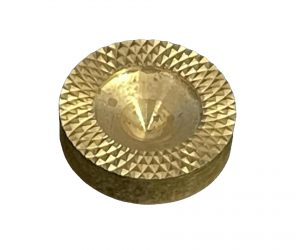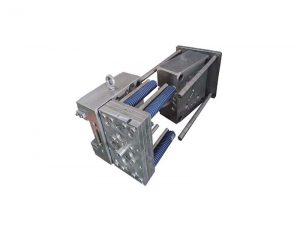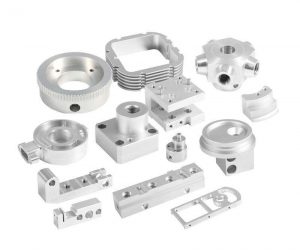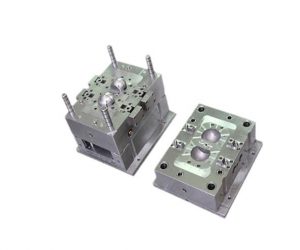Let's talk about how plastic stuff gets made into all those cool shapes and things we use. Imagine this: you've got a mold, kind of like a cake tin but for plastic. We pour melted plastic into it, spin and heat it up along two vertical axes. Gravity and heat team up to make sure the plastic spreads evenly, melts, and sticks to every bit of the mold inside. Once it cools down and sets, we pop out our finished product.
Here's why this injection molding process rocks:
- It's super speedy. You can make loads of plastic bits in no time, boosting productivity big time.
- Precision is key. By controlling the mold's shape and size, you get products that fit just right, with perfect dimensions and smooth surfaces.
- Consistency is guaranteed. Every time you run the process, you get the same result – no surprises.
- Versatility is its middle name. Whether it's ABS, PC, or PVC, this method handles various plastics and shapes with ease.
- And guess what? It saves material too. Since only fully melted plastic goes into the mold, there's less waste.
But hold on, it's not all rainbows and butterflies:
- The machines and molds cost an arm and a leg. Specialized gear is needed, which means deep pockets.
- Molds are pricey to design and make, plus they don't last forever and need replacing eventually.
- Time is money, and this process takes its sweet time for melting, cooling, and shaping.
- Complex designs? Forget about it unless you go a different route. Some shapes just aren't easy to pull off with injection molding.
In a nutshell, injection molding is a champ when it comes to making plastic products fast, accurate, and versatile. But remember, it's not without its quirks. When picking how to make your stuff, weigh the pros and cons against what you need and what you've got to work with.
Nowadays, many large injection mold factories provide one-stop services from mold opening, manufacturing, injection molding to spraying. In this process, the management level of the enterprise needs to be quite high, especially for the injection molding industry, which is a field with a wide range of knowledge and high technical requirements. This includes plastic characteristics, injection product structure, injection mold structure, injection machine operation, injection process adjustment, common defect cause analysis, plastic additives (color matching), plastic product performance testing, injection part quality management, injection engineering management, workshop management, and safety production management.
The management of injection molding processing and production is a systematic engineering. If injection molding management is not in place, problems such as low production efficiency, high defect rate, excessive machine occupation, high material consumption, batch returns, mold damage, manual destruction of molds, screw head breakage, delivery delay, raw material waste, and safety production accidents often occur.
Modern injection molding production is shifting from labor-intensive to technology intensive, from manual workshop mode to automated production mode. However, currently many enterprises' injection molding production and operation still remain in the outdated production and management mode of "poor quality, low efficiency, and high consumption" in the past. They are accustomed to passively responding to problems after they arise, which has become a bottleneck for the development of the enterprise.
Realizing advanced injection molding production, operation, and management models with high quality, high efficiency, and low consumption is the goal that every enterprise aspires to achieve. In order to achieve this goal, managers of injection molding enterprises should update their concepts, change the past practice of relying on experience and following problems, adhere to the "prevention first" work method, do the right thing from the beginning, implement a "systematic, scientific, and standardized" injection molding production management system, strengthen control over the injection molding production process, enhance employee vocational skills training, continuously improve injection molding technology management level, improve quality, enhance production efficiency, reduce machine occupation, reduce defect rate and material consumption, reduce costs, keep pace with the times, and enhance enterprise competitiveness!
Injection molding is a manufacturing process used to produce a wide range of plastic parts and products. The production management of injection mold processing is a system engineering approach that involves a coordinated and integrated approach to managing the entire production process. Effective production management of injection mold processing can help manufacturers achieve high efficiency, reduce costs, and improve product quality. Here are some reasons why production management of injection mold processing is system engineering:
- Planning: System engineering involves a structured approach to planning the entire production process, from the initial design stage to final production. A well-designed production plan can help manufacturers optimize the use of resources, reduce waste, and improve the overall efficiency of the process.
- Control: Production management involves controlling the production process to ensure that it runs smoothly and efficiently. This includes managing the flow of materials, monitoring the progress of production, and ensuring that quality standards are met.
- Optimization: System engineering helps manufacturers to optimize the production process by identifying areas for improvement and implementing changes to increase efficiency, reduce waste, and improve product quality.
- Integration: Production management involves the integration of different parts of the production process, from design to final production. This integration ensures that each step of the process is coordinated and optimized to achieve the desired outcome.
- Monitoring: System engineering involves continuous monitoring of the production process to identify any issues or deviations from the plan. This allows manufacturers to take corrective action quickly and avoid any delays or quality issues.
Overall, the production management of injection mold processing is a systematic project. This is because it involves the coordination and integration of the entire production process. By implementing effective production management measures, manufacturers can improve production efficiency, reduce costs, and enhance product quality. This method ensures the planning, control, optimization, integration, and monitoring of the entire process to achieve optimal results.





